Congratulations to Alumnx Lizzy Fox
Congratulations to our own Lizzy Fox on the release of her book of poetry Red List Blue, just published by Finishing Line Press. I “attended” the online reading and book launch party last Friday, sponsored by Bear Pond Books and the Hubbard Library. I’d previously heard Lizzy read a poem or two at VCFA readings, but on this night she read several that I hadn’t heard. I very much enjoyed them.

Lizzy is a graduate of the MFA in Writing program here at VCFA, and was the Assistant Director of the Writing & Publishing program until July of 2020. We love and miss her. She’s a bright and shining light who was ready to show each of us the way. If we ever had a question, the answer was always “Ask Lizzy.” But we are so proud of her for following her goals and moving on when she needed to. She left to attend the Teacher Apprenticeship Program at Champlain College where she will earn her Vermont teaching license and go on to teach high school English. The best of success in this endeavor, Lizzy!
And now she has a book out!
This is not a typical book of poetry. Lizzy came out of the slam poetry scene and sound is so important to her work. Her poetry resonates strongly with me and this is probably why. (I was a street poet in San Francisco in the 80s, and that scene melded into the slam scene.) I LOVE poetry that’s meant to be read OUT LOUD! Lizzy told us that before she began her MFA program she wasn’t very interested in how poetry looked on the page. But—despite still being concerned about the sound—she has come to appreciate carefully planning a poem’s look.
She began the reading with “Empty/Full” a poem about love and cold, which closes with these lines:
“Have you seen how the light bends off the ice these days?
The way snow becomes the sun? How empty the trees,
always reaching, never in want?”
Lovely lines, aren’t they?
Lizzy read several poems that night, and even when she thought she’d read the last one, Valentine’s Day, people asked for more: “Read Beryl,” they asked. “Read A minute to seven.” So, of course, she did.
Lizzy’s poetry–or at least what she read that night–seem to be invariably about love, but all kinds of love: not necessarily romantic love, but…that too. Even the poems that are serious have a light air to them, like pixies dancing in a field. I had thought I’d lost my taste for poetry, but Lizzy may just have revived it. I will leave you with my favorite lines of the night, from the poem Blue:
” …she was a painter too–my grandmother.
She dyed her hair red and used yellow washes to make
the canvas brighter. She talked about the black hole
in her brain that ate memories. Later I learned
it was martinis. I’m beginning to notice a pattern.
The sky on a sunny day but not on a cloudy one. Sapphires
except not all of them. Did you know that sapphires
come in every color except red? Red sapphires are called rubies.”
Get the book/Find Out About Future Readings
You can order Red List Blue here.
Lizzy will be reading Friday night at the Writing & Publishing Reading Series (here) along with current Assistant Director Shin Yu Pai, visiting faculty Tim Horvath, and visiting writer Prageeta Sharma.
You can find out about Lizzy’s other readings here.
Sports brands | Air Jordan 1 Retro High OG Retro High OG Hyper Royal 555088-402 , Fitforhealth
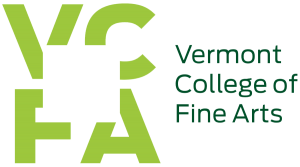
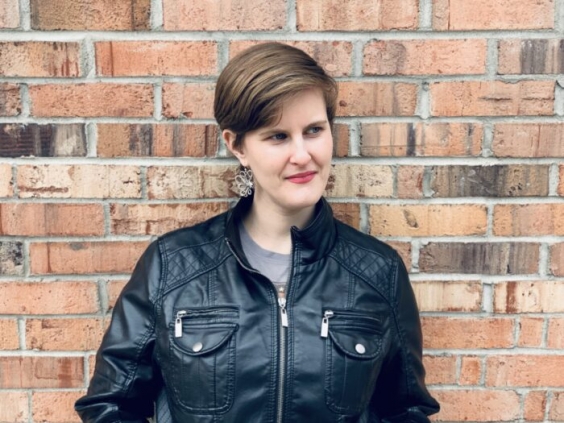
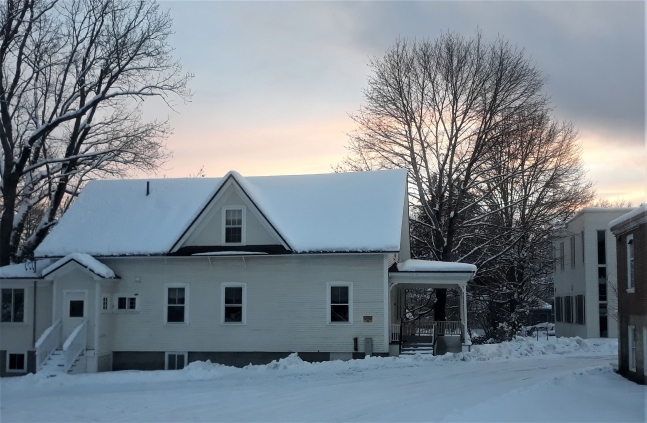
 A self described nomad, Hassan AJ is an international student in his second year at VCFA. Five or six years ago he was a pre-med student secretly taking online writing classes. He was lured away from medicine when he fell in love with language itself, from the sentence level on. (In other words, from the micro–to the macro) He’s fascinated by the ability to “assemble language on the page to make the world less abstract and more tangible.”
A self described nomad, Hassan AJ is an international student in his second year at VCFA. Five or six years ago he was a pre-med student secretly taking online writing classes. He was lured away from medicine when he fell in love with language itself, from the sentence level on. (In other words, from the micro–to the macro) He’s fascinated by the ability to “assemble language on the page to make the world less abstract and more tangible.”
 The evening was led by James, the author of the bestselling novel The Kept, a finalist for the New England Book Award. I know I always rave about our teachers here at VCFA, but I must sing James’s praises as well. We’ve just finished his three-week class on structure, and I feel like my writing toolbox is fuller than it has ever been. Hearing his take on rising action and learning about Inner Story/Outer Story will serve me well in my future writing career. If you ever get a chance to take a class or workshop taught by James—whether here at VCFA or elsewhere—take the class. I promise you it will be worth it.
The evening was led by James, the author of the bestselling novel The Kept, a finalist for the New England Book Award. I know I always rave about our teachers here at VCFA, but I must sing James’s praises as well. We’ve just finished his three-week class on structure, and I feel like my writing toolbox is fuller than it has ever been. Hearing his take on rising action and learning about Inner Story/Outer Story will serve me well in my future writing career. If you ever get a chance to take a class or workshop taught by James—whether here at VCFA or elsewhere—take the class. I promise you it will be worth it.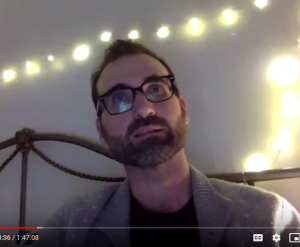 seminar and various modules. His poetry collection Mad River was published in 2017, and his chapbook 20,000 Pigeons was published in 2014. His cross-genre work has appeared in The New England Review, Ploughshares, The Rumpus, and Best American Short Stories of 2015. He is a co-founder and co-editor of Waxwing.
seminar and various modules. His poetry collection Mad River was published in 2017, and his chapbook 20,000 Pigeons was published in 2014. His cross-genre work has appeared in The New England Review, Ploughshares, The Rumpus, and Best American Short Stories of 2015. He is a co-founder and co-editor of Waxwing.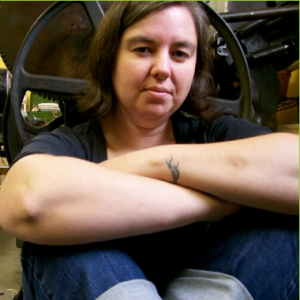 . Kelly is described on the VCFA website as a poet who “walked into a printshop and never looked back.” As visiting faculty, she teaches letterpress printing. She runs May Day Studios right here in Montpelier. Before falling for the smell of ink and paper, Kelly got her MFA in Creative Writing at California College of the Arts. (Truth be told, that’s where she succumbed to her love of letterpress.) She read us poetry from back in the day and beyond.
. Kelly is described on the VCFA website as a poet who “walked into a printshop and never looked back.” As visiting faculty, she teaches letterpress printing. She runs May Day Studios right here in Montpelier. Before falling for the smell of ink and paper, Kelly got her MFA in Creative Writing at California College of the Arts. (Truth be told, that’s where she succumbed to her love of letterpress.) She read us poetry from back in the day and beyond.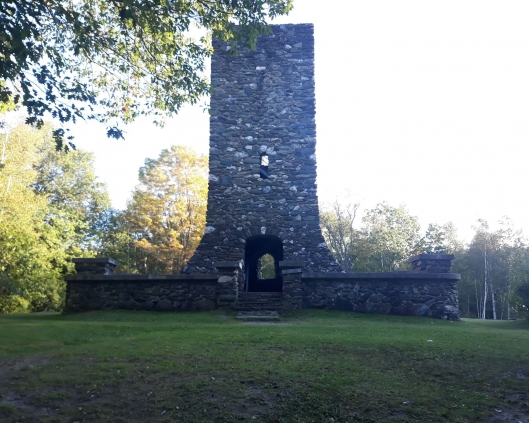
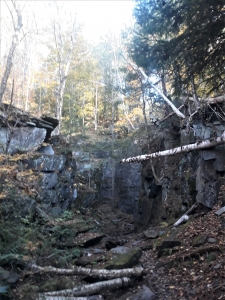 I’ll probably always start these posts with something about the beauty of Vermont, and what a special place
I’ll probably always start these posts with something about the beauty of Vermont, and what a special place  hang on the bottom branches of skeleton forms. Other leaves have just started the jettison process. When people and dogs walk through the fallen leaf-litter they make soft crunching and shooshing sounds, an early reminder of the near-inaudible underfoot crunch of the snow that’s yet to come. The locals tell me that the Fall colors haven’t been as outstanding as in previous years, due to having a drier than normal September, but the leaves have been vibrant enough to make this California girl’s heart go pitter-pat.
hang on the bottom branches of skeleton forms. Other leaves have just started the jettison process. When people and dogs walk through the fallen leaf-litter they make soft crunching and shooshing sounds, an early reminder of the near-inaudible underfoot crunch of the snow that’s yet to come. The locals tell me that the Fall colors haven’t been as outstanding as in previous years, due to having a drier than normal September, but the leaves have been vibrant enough to make this California girl’s heart go pitter-pat.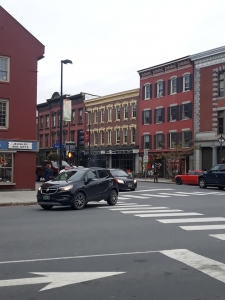 California and Vermont have many similarities: stunning vistas, sophisticated cities with lots of liberal, artsy folks. Cities in Vermont are smaller, of course. Montpelier, for example, is the nation’s smallest state capital, with nearly eight-thousand people. Eight-thousand people would be a town in California, not a city. There’s no doubt, however that Montpelier is a city. It’s downtown area bustles during the day, with locals, those with business at the Statehouse, and tourists.
California and Vermont have many similarities: stunning vistas, sophisticated cities with lots of liberal, artsy folks. Cities in Vermont are smaller, of course. Montpelier, for example, is the nation’s smallest state capital, with nearly eight-thousand people. Eight-thousand people would be a town in California, not a city. There’s no doubt, however that Montpelier is a city. It’s downtown area bustles during the day, with locals, those with business at the Statehouse, and tourists. 
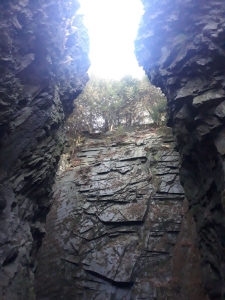 This easy hike begins just steps outside of the back door of the Glover dorms and takes you through a grassy area called
This easy hike begins just steps outside of the back door of the Glover dorms and takes you through a grassy area called 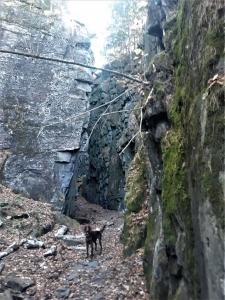 recent tagging it has an ancient or otherworldly feel, with slate walls forming a tall and narrow canyon. It’s quiet and peaceful, and a great place to meditate, or write, or even just sit. It feels as though there’s no one around for a hundred miles, and yet…you can be back downtown in less than a half an hour!
recent tagging it has an ancient or otherworldly feel, with slate walls forming a tall and narrow canyon. It’s quiet and peaceful, and a great place to meditate, or write, or even just sit. It feels as though there’s no one around for a hundred miles, and yet…you can be back downtown in less than a half an hour! There’s also
There’s also 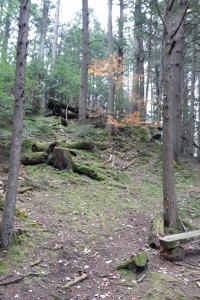 Register of Historic Places.) The park was established in 1899 with the bequeathing of its original 134 acres. The tower sits on land that was deeded to the city in 1911, at the very summit of Capitol Hill. Not only could you see all around the countryside from that summit, the tower stood out like a beacon to those downtown and at the Capitol Building. The hope was that seeing the tower on the hill would draw visitors up to the park.That worked until 1961 when the pines planted on the previously clear-cut pastureland grew tall enough to block the view.
Register of Historic Places.) The park was established in 1899 with the bequeathing of its original 134 acres. The tower sits on land that was deeded to the city in 1911, at the very summit of Capitol Hill. Not only could you see all around the countryside from that summit, the tower stood out like a beacon to those downtown and at the Capitol Building. The hope was that seeing the tower on the hill would draw visitors up to the park.That worked until 1961 when the pines planted on the previously clear-cut pastureland grew tall enough to block the view.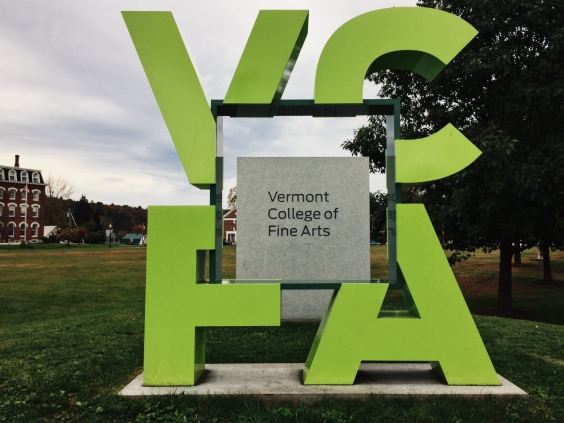
 The leaves have started to change: a spot of scarlet here and there, a clump of crimson among a sea of green. Last week and the week before it was pure green with no red to mark the change. Now, however, the crimson grows with each day while the green, like the sea, recedes. I’m looking forward to the New England color show, as are my fellow out of state students. We come from across the country and across the world, with two from California, two from Oregon (one of them by way of North Carolina), two students from the South (Virginia and Georgia), one from the rust belt state of Pennsylvania, another from Massachusetts, from neighboring counties, and from as far away as Nigeria. We’re a diverse bunch, just getting used to Montpelier, to the dorms and the school, and we are beginning to form friendships with fellow writers that could last for the rest of our lives.
The leaves have started to change: a spot of scarlet here and there, a clump of crimson among a sea of green. Last week and the week before it was pure green with no red to mark the change. Now, however, the crimson grows with each day while the green, like the sea, recedes. I’m looking forward to the New England color show, as are my fellow out of state students. We come from across the country and across the world, with two from California, two from Oregon (one of them by way of North Carolina), two students from the South (Virginia and Georgia), one from the rust belt state of Pennsylvania, another from Massachusetts, from neighboring counties, and from as far away as Nigeria. We’re a diverse bunch, just getting used to Montpelier, to the dorms and the school, and we are beginning to form friendships with fellow writers that could last for the rest of our lives.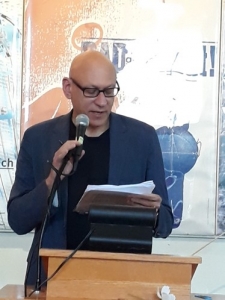
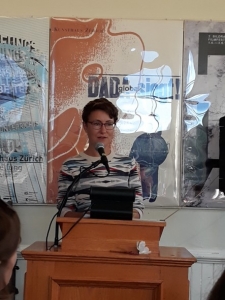
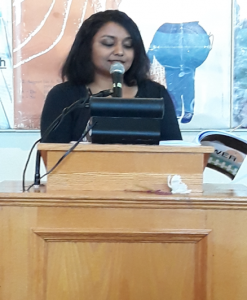 fall on that fateful day. Quite a compelling way to spend the eighteenth anniversary of that event.
fall on that fateful day. Quite a compelling way to spend the eighteenth anniversary of that event.